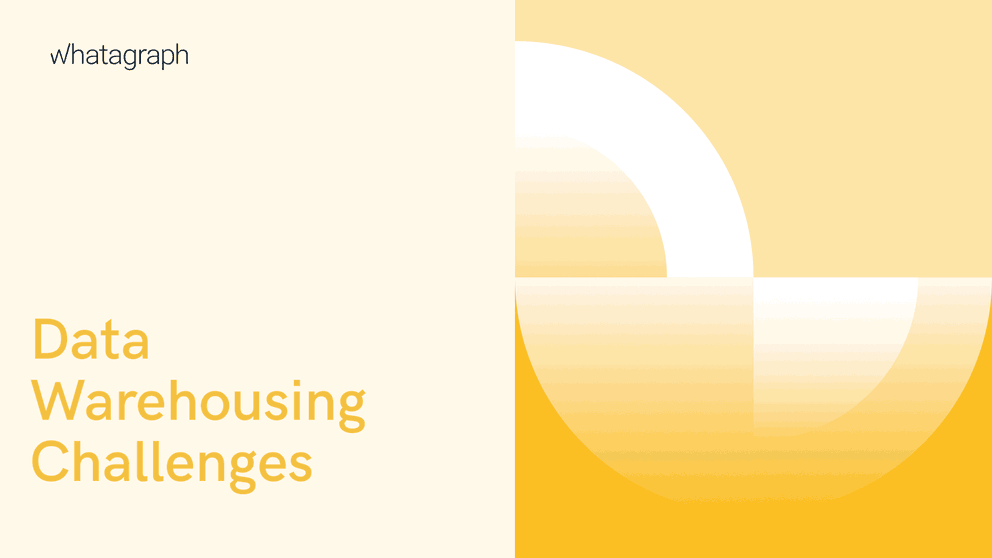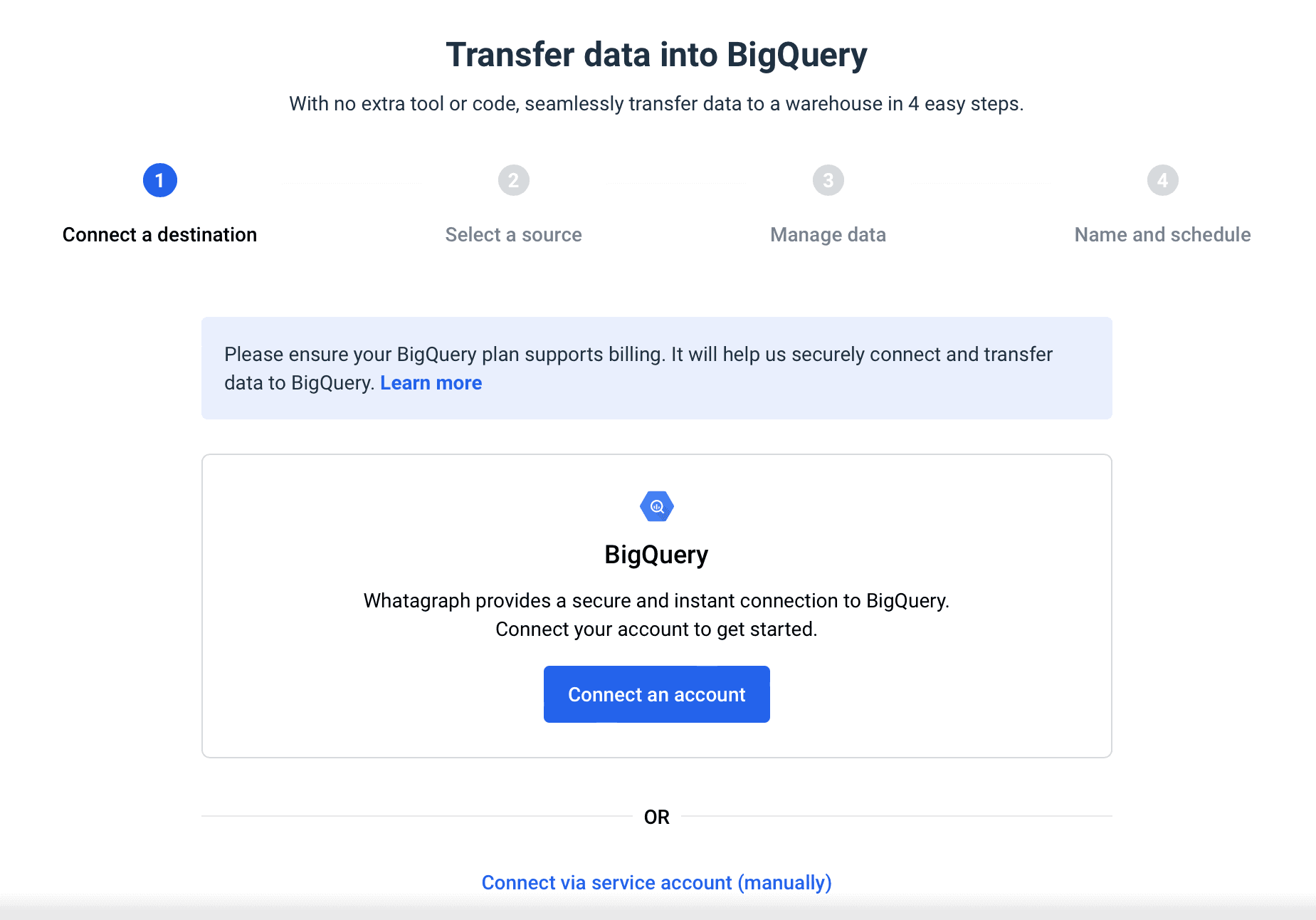Top 6 Challenges of Data Warehousing
You realize the importance of business data as a way to keep up with the competition and customer expectations. However, as the number of data sources and volume of information increases with technological advancements, it’s becoming more difficult to keep track of and store information.
A data warehouse allows you to consolidate your business data coming from different channels, but there are still some challenges you can run into while setting up your data warehousing solution.

May 10 2023●5 min read

What is data warehousing?
Data warehousing is a business practice of collecting and storing data from multiple sources in a data warehouse for more efficient data analytics, reporting, and consistency.
Organizations can also store historical and current data to protect it from shifting policies or discontinued services of individual platforms.
As an essential process for any data-driven organization, data warehousing can assist in decision-making, reveal previously unknown insights, optimize business processes, reduce costs, etc.
A data warehouse usually consists of a database, an ETL (extract, transform, load) layer, access tools, and metadata. A database forms the foundation, the ETL layer extracts and prepares data, while access tools help users search and query to provide the context and definition for big data.
By implementing these data warehouse components, an organization can improve data accuracy, consistency, and integrity, as well as automate much of its data management strategy.
Top 6 challenges of traditional data warehousing
Let’s take a closer look at the hurdles organizations face when setting up a data warehouse the traditional way.
Challenge 1: Managing the data structure and optimization
The correct way to process data is to structure it in a way that will aid your future operations. As you add more and more data to your warehouse, structuring becomes increasingly difficult and can slow down the ETL process. Also, it becomes increasingly difficult for system managers to qualify the data for advanced analytics.
In terms of system optimization, it’s important to carefully design and configure data analysis tools that are better suited to business needs.
Challenge 2: Managing user expectations
As more information gets loaded into a data warehouse, management systems struggle more to find and analyze it. This means that business users expect refined and relevant results from any analysis they run.
But, data warehouse performance can decrease as the data volume increases, which inevitably leads to reduced speed and efficiency. It’s your job to manage the expectations of your team so that they aren’t frustrated when the buffering occurs.
Challenge 3: The costs of data warehousing
A common problem with traditional data warehouses is the high failure rate. According to a Gartner report, more than 50% of data warehouses fail at one point — not only because of the technical challenges and complex architecture but also because the projects fail to meet user requirements.
Organizations then face the same challenges when trying to update a data warehouse to accommodate new reporting requirements or data models.
Even if such projects don’t fail, they have high costs and timelines. All these factors make traditional data warehouses inadequate for real-time data requirements and scalability.
On the other hand, if you go with a cloud-based data warehouse, all the maintenance rests on the cloud provider, while the cost is formed by the used GBs per month.
Snowflake, for example, even has a flat rate of $23/TB/month.
Google BigQuery’s active storage costs $0.02 per GB per month, with the first 10 GB free each month.
Challenge 4: Data quality
Maintaining quality data is difficult in a traditional data warehouse where manual errors and missed updates lead to corrupt or obsolete data. This inevitably impacts business decisions and causes inaccurate data processing.
As businesses increasingly adopt digital transformation initiatives, they often run into the problem of unintended data silos.
This occurs when departments heavily rely on cloud tools accompanied by the democratization of technology — where each department is more likely to be responsible for purchasing and developing technologies for its use.
Each of these silos represents another source system from which users need to pull, integrate, and analyze data to use it correctly in decision-making. To make matters worse, silos often don’t follow the same set of businesswide standards, making data integration even more difficult.
And due to the democratization of cloud technologies, your organization might even have valuable data silos that IT doesn’t know about.

Modern warehousing solutions can automate the data quality process, preventing data silos, outliers, manual errors, redundancy, and other data inconsistencies from occurring.
With an automated data warehousing solution, you are able to provide high-quality data that brings the most value to your organization.
Challenge 5: Data accuracy
If you want your data insights and business intelligence to be reliable, the data that is analyzed in a warehouse needs to be accurate. Traditional data warehouses often suffer from inconsistencies that lead to inaccurate data as a result of manual processing and other errors.
There are several ways to go around this challenge, but the first and most important is to ensure that a data collection and storing process is accurate and that the new data is transformed correctly before it enters the warehouse.
Data accuracy can also be improved through regular testing.
However, with the right data warehousing solution that supports automated transfers, the chance for human error is minimal. If you use an ETL tool, not only can you prevent inaccurate data from entering your data warehouse, but also flag errors so that you can optimize your data accuracy at the source.
Challenge 6: Adjusting to non-technical users
Traditional data warehouses are often complex for non-technical teams to use. Sure, everyone can master data analysis enough to be able to query data from any source and know how to use the data provided this way. But the reality is different.
Non-technical users often need to interact with company data, which is not very efficient if you use a traditional data warehouse — submitting a request to the data team, waiting for the data team to fulfill the request, and using the data once delivered to them.
The process might work in small teams, but for larger teams, it’s time-consuming and inefficient, as data teams can quickly become saturated with requests, leading to frustration and bottlenecks.
However, with modern, self-managed data warehouses and automated ETL tools, this challenge is easy to overcome.
Data transfer tools like Whatagraph allow any user to move data from disparate sources to Google BigQuery without enlisting any help from the data or developer team. With point-and-click solutions, even non-technical users can operate a data warehouse without slowing down the workflow.
How to choose the right data warehouse tool?
Many of the challenges associated with traditional data warehouses could be avoided with the use of a data warehouse automation tool.
Most of these tools are packed with automation features that help teams speed up the process of deploying and updating your data warehouse.

What to look for in a data warehousing tool:
- An easy-to-use drag-and-drop interface for setting up your data warehouse pipelines.
- A high-performance ETL engine that allows parallel processing and other performance optimization.
- An end-to-end platform that replaces tools like data modelers, ETL/ELT generators, data quality management software, etc.
- Rapid transfers to cloud data warehouses like Google BigQuery, Snowflake, Microsoft Azure, and Amazon Redshift.
Conclusion
When compared to traditional data warehouse infrastructure, fully-managed cloud-based data warehouses provide you with easy-to-use features to build and scale your warehouse.
This ease of use and fast implementation is especially important for teams that manage company sources and data transfers on their own, as well as agencies that serve a large number of clients.
Whatagraph offers an automated ETL tool that allows you to move data from different sources to a data warehouse without any coding.
With Whatagraph, there’s little room for error, as even non-technical users can easily connect different sources and schedule automated data transfers from popular marketing platforms to BigQuery.
Once your data is consolidated in your BigQuery warehouse, you can visualize it and share the insights with stakeholders using Whatagraph’s reporting feature.
Find out more about Whatagrap’s hassle-free data transfers and get ready to fully own your business data.

WRITTEN BY
Nikola GemesNikola is a content marketer at Whatagraph with extensive writing experience in SaaS and tech niches. With a background in content management apps and composable architectures, it's his job to educate readers about the latest developments in the world of marketing data, data warehousing, headless architectures, and federated content platforms.


